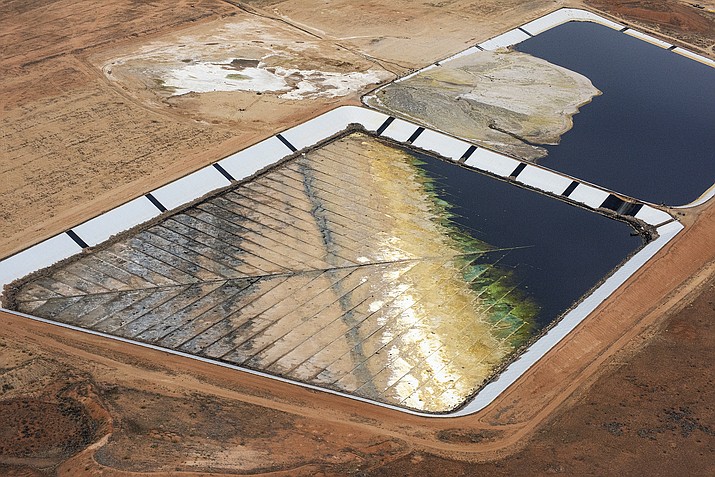
WHITE MESA, Utah — Curtis Moore, vice president of marketing and corporate development with Energy Fuels Inc., said a Grand Canyon Trust report about the White Mesa Mill is not credible and comes from an anti-nuclear group that is biased against them.
The Grand Canyon Trust has called the White Mesa Mill a waste storage site and Moore said it is not a waste storage site. He said they remove the uranium that comes in and recycle it.
“We remove it like ore out of a mine and we run it through the mill basically recycling it,” he said.
Moore said the Grand Canyon Trust cherry picks data from the report. He said nuclear energy is essential for fighting climate change issues as it supplies 20 percent of the energy in the U.S. and 50 percent of the carbon free electricity.
“It absolutely helps with climate change. You cannot address climate change without nuclear,” he said.
Moore said the Ute Mountain Ute Tribe’s concerns about water and air pollution are not valid as they are being egged on by the Grand Canyon Trust. He said the White Mesa Mill has 80-90 ground and air monitors to protect against air and water pollution.
“They have no credible evidence,” he said.
Moore said Energy Fuels meets state and federal regulations. He said the White Mesa Mill brings economic and job opportunities to the Ute Mountain Ute Tribe. He said the mill has been going for 40 years, remains in great condition and creates 17 rare elements which are used for electricity, wind and batteries.
“It’s an important piece of the infrastructure,” he said.
Moore said Energy Fuels is heavily regulated and has considered the impact of its work on Ute Mountain Ute Tribe.
“I can assure you that the state and federal government would not let that happen,” he said about air and water pollution.
Moore said the White Mesa Mill should also not have any impact on nearby Bears Ears.
“We have monitors all over our site and we are well within the regulatory impact,” he said.
Moore said he is aware of the harmful impact of uranium during the 1950s and 1960s for Native Americans.
“Today’s industry is very different from that industry. Back then it was a government sponsored defense program,” he said. “Today it is a heavily regulated and newer technology. We know how to do it right.”
Moore said the White Mesa Mill has an outstanding regulatory record, but has a current dispute with the EPA on an issue with one of its evaporation ponds.
“Under the regulations, “solids” in tailings cells and evaporation ponds at uranium mills need to be covered with water in order to reduce radon emissions,” he said. “In 2017 or so, we wanted to draw down the water level in Cell 4B (which is an evaporation pond) in order to recycle some vanadium, and in the process, expose some material at the bottom and on the sides of the pond.”
According to Moore, after several years of testing, analysis and discussion, it was determined that the material in the pond were mostly evaporite crystals, not uranium tailings. He said these crystals emit very little radon.
“So there is no scientific, health or environmental reason to cover them with water,” he said.
Additionally, Moore stated that in March 2019, the EPA gave Energy Fuels a written determination that they did not consider those crystals to be “solids” under the regulations, thereby allowing the company to reduce the water level, expose the crystal material and recover the vanadium.
“Then, this past December, out of the blue, a regional EPA office notified us that we were in “egregious violation” of the regulations by having exposed these crystals,” he said.
Moore said Energy Fuels was shocked.
“The EPA was now holding us in violation of something we thought they told us we could specifically do,” he said. “It all looks like a huge misunderstanding, and we have been working with them on a path forward. They have removed the “egregious” finding, and we hope they remove the finding of a violation entirely.
Moore said the company is now filling the pond with water.
“Though, it is critical to understand that the pond in question emits almost no radon, and we are well within the regulatory limits for radon emissions at the White Mesa Mill. We have radon monitors all over the site, on our fence lines, and I think even offsite. They are all well within the limits,” he said.
Moore said they also have had minor violations in the past like paperwork filed in the wrong spot.
“But, nothing major. If the mill was a major public health or environmental disaster, as the Grand Canyon Trust tries to claim, we would have lots of major violations and would likely be shut down,” he said.